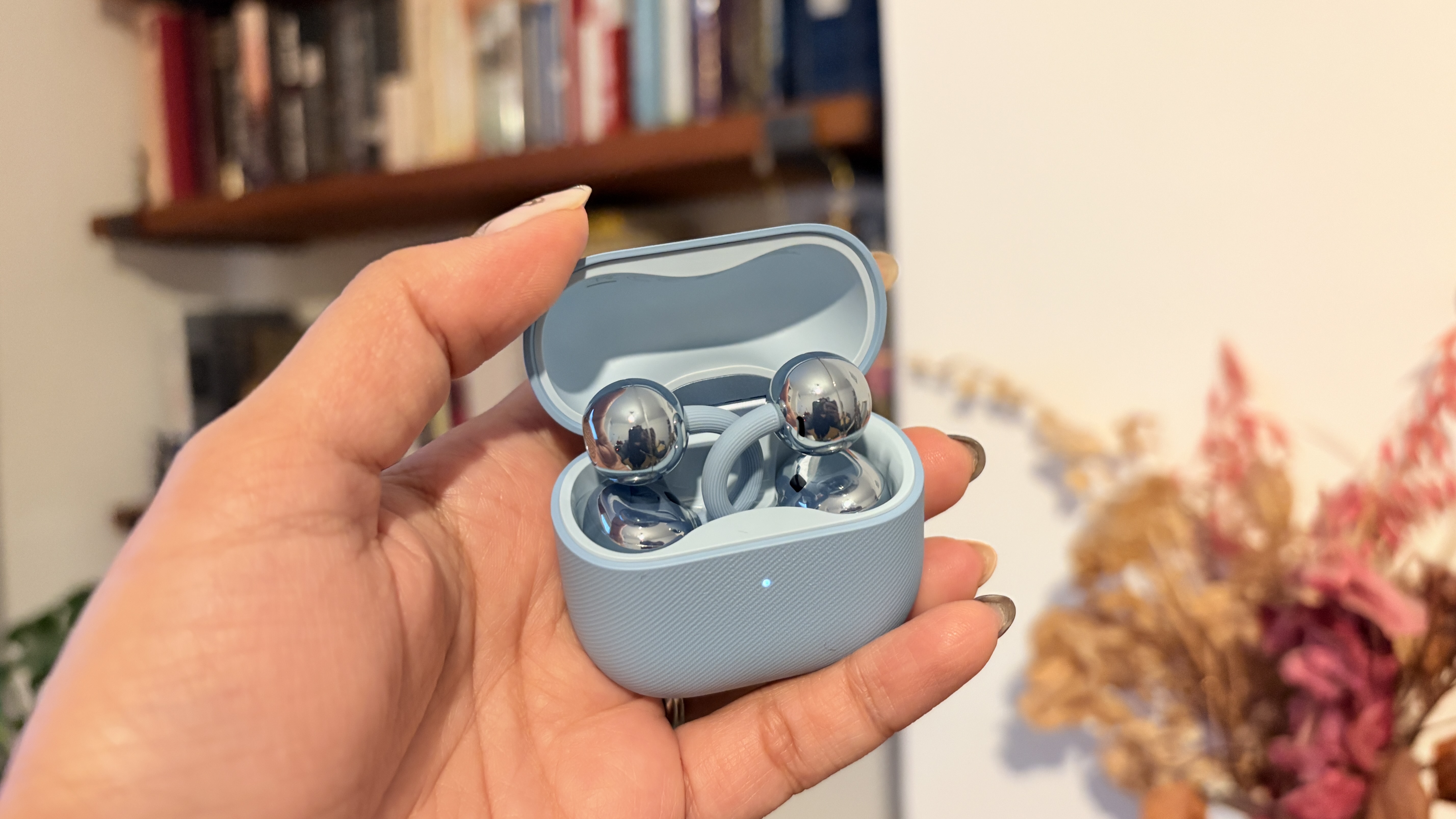Active vs passive speakers: what's the difference? Which is better?
Confused about the difference between active and passive speakers? Let us explain...
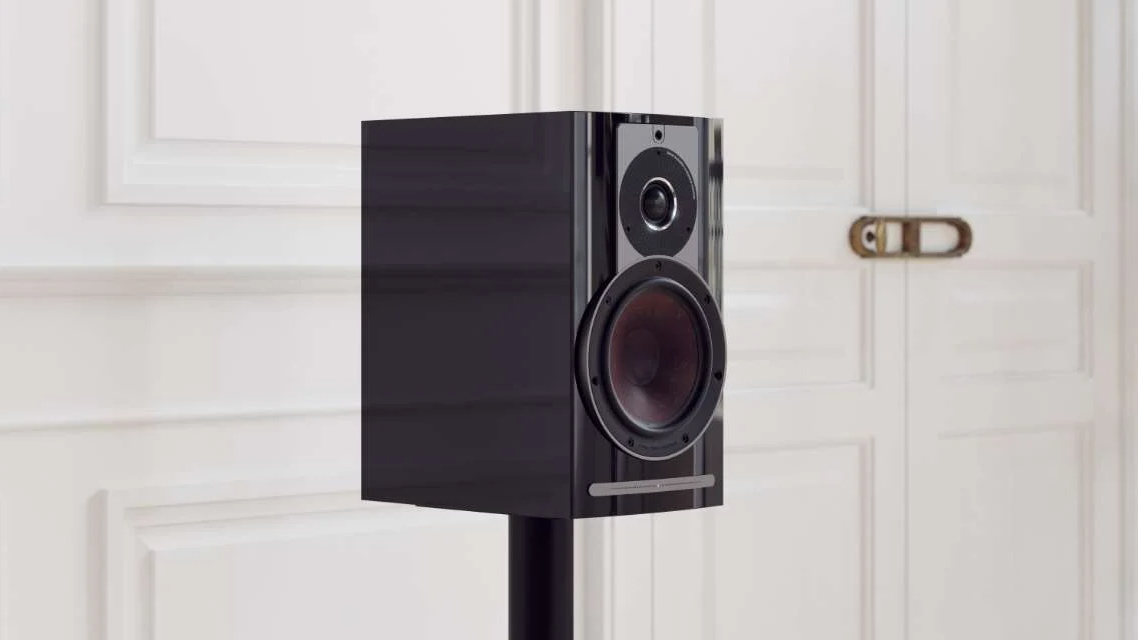
In their simplest form, traditional stereo hi-fi systems consist of a source component, an integrated amplifier and a pair of passive speakers. Pretty straightforward, right?
But if you break down the signal path it can be split into a greater number of distinct sections, most of which are lumped together in this simple set-up.
It's not always clear what the difference is between passive speakers and active speakers, especially considering how innocuous the terms often appear. Here we will break what passive and active speakers are, how they differ, which is better, and even what defines powered speakers, too. By the end, you will have a much better picture of how these various types work and, hopefully, which is right for you. After that, you can jump over to our best speakers and best active speaker buying guides to find the perfect option for your needs and budget.
What are passive speakers?
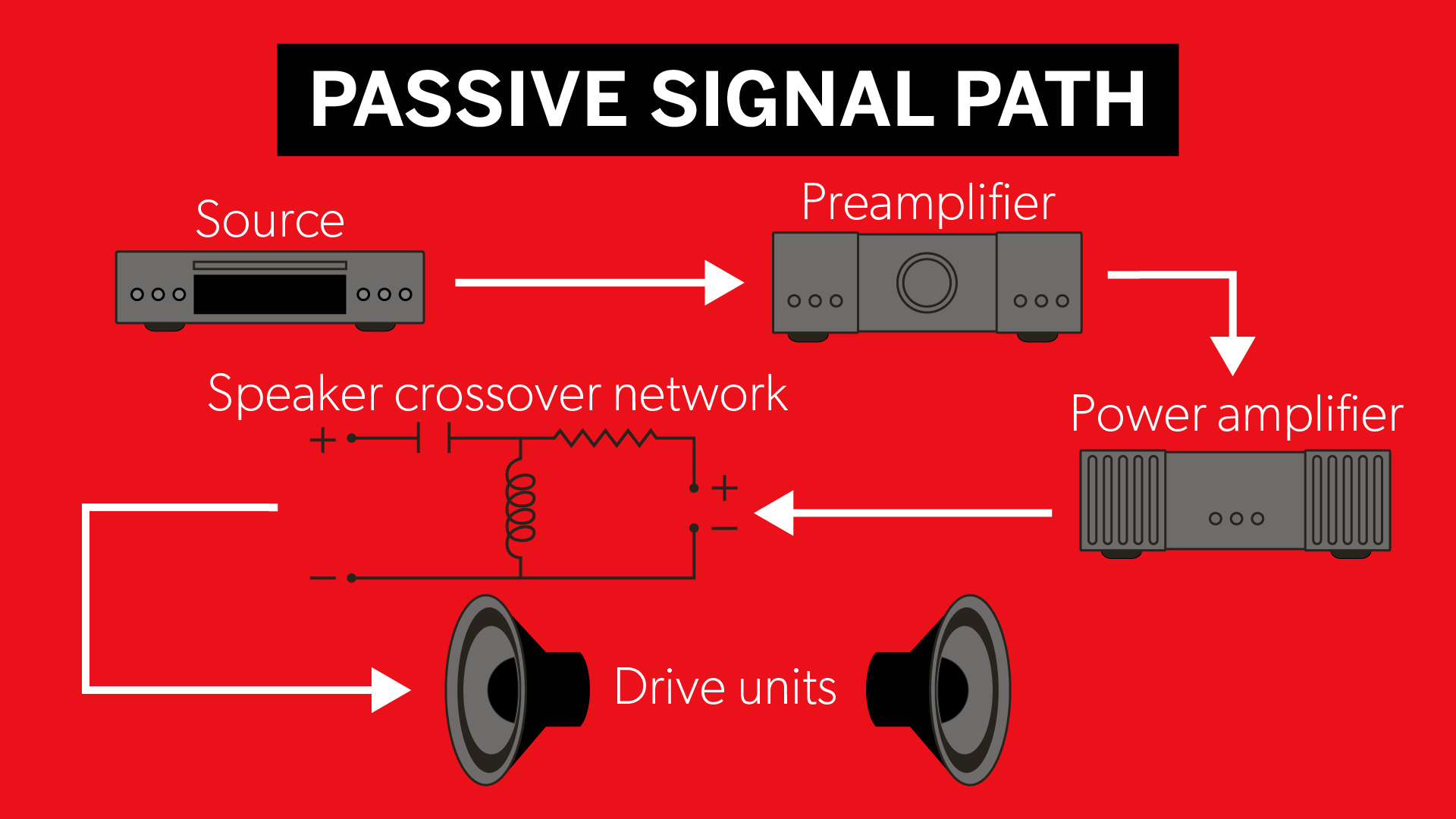
First, there’s a source component, which is the piece of kit that plays the music. This can be a CD player, music streamer, record player or even a computer or phone. Next we have a preamplifier section, which switches between sources and controls the volume level.
If you have a record player, you will also need a phono stage to increase the output from your cartridge to line level and equalise the signal before feeding it to the preamp circuit (we have omitted the phono stage from our diagram above to keep things simple).
Now you need muscle, something that can take the line-level signal from the preamplifier and increase it enough to drive a pair of speakers – say hello to the power amplifier. However, this isn’t directly connected to your speaker’s drive units.
Its output has to pass through a crossover filter network that in a two-way speaker splits the signal into just high frequencies (to go to the tweeter) and everything else for the larger mid/bass unit.
The latest hi-fi, home cinema and tech news, reviews, buying advice and deals, direct to your inbox.
If you have a three-way speaker, then the crossover splits the sound up into three parts – treble, midrange and bass. This crossover network doesn’t need a power source to work, and in that sense it is considered passive. That’s more or less the signal path in a conventional passive speaker set up.
Passive speakers include examples such as the KEF R3 Meta, the B&W 606 S2 Anniversary Edition, the Mission 770, the Wharfedale Diamond 12.3 and many, many more.
What are active speakers?
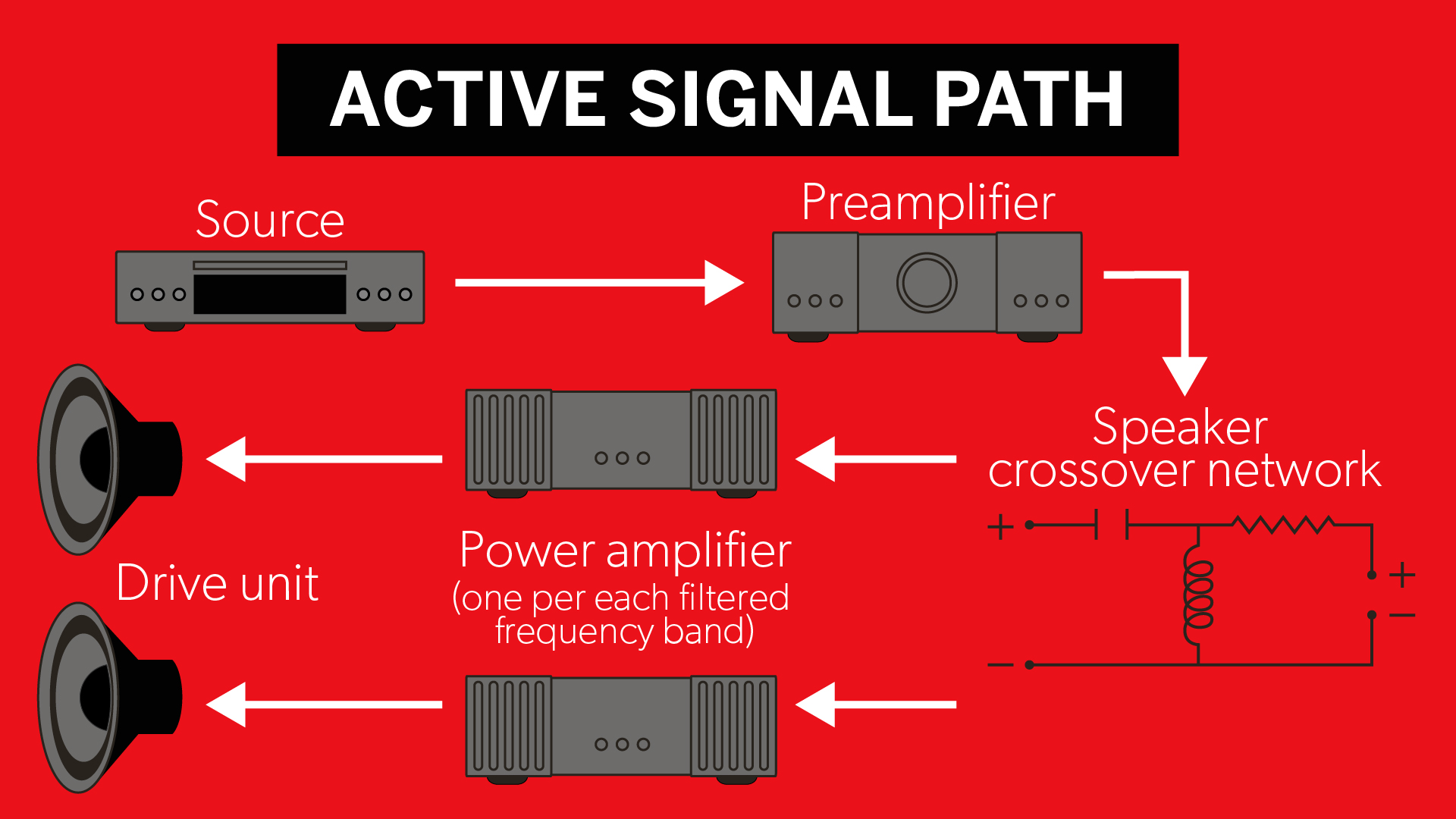
In active speakers, things are the same until after the preamplifier stage. The signal from the preamp goes into an active crossover network. While this performs the same job as the crossover in the passive set-up it works at line level (around 2v) rather than speaker level (typically 15-35v).
Working at lower signal levels means the components used can be optimised for precision rather than power handling. Such a design would normally use active components, and on more sophisticated products, some form of signal processing (whether digital or not) to get the best out of the drive units.
The result is a filter network that is (potentially) way more accurate in its operation, and delivers a better integrated and optimised sound.
Each separated frequency band of this line-level signal is then sent to a dedicated power amplifier that feeds as many drive units as are responsible for delivering those frequencies.
Prominent examples of active speakers include the Award-winning KEF LSX II, the Acoustic Energy AE1 Active, the Dali Oberon 1 C and the ATC SCM40A.
Active vs passive speakers: which is better?
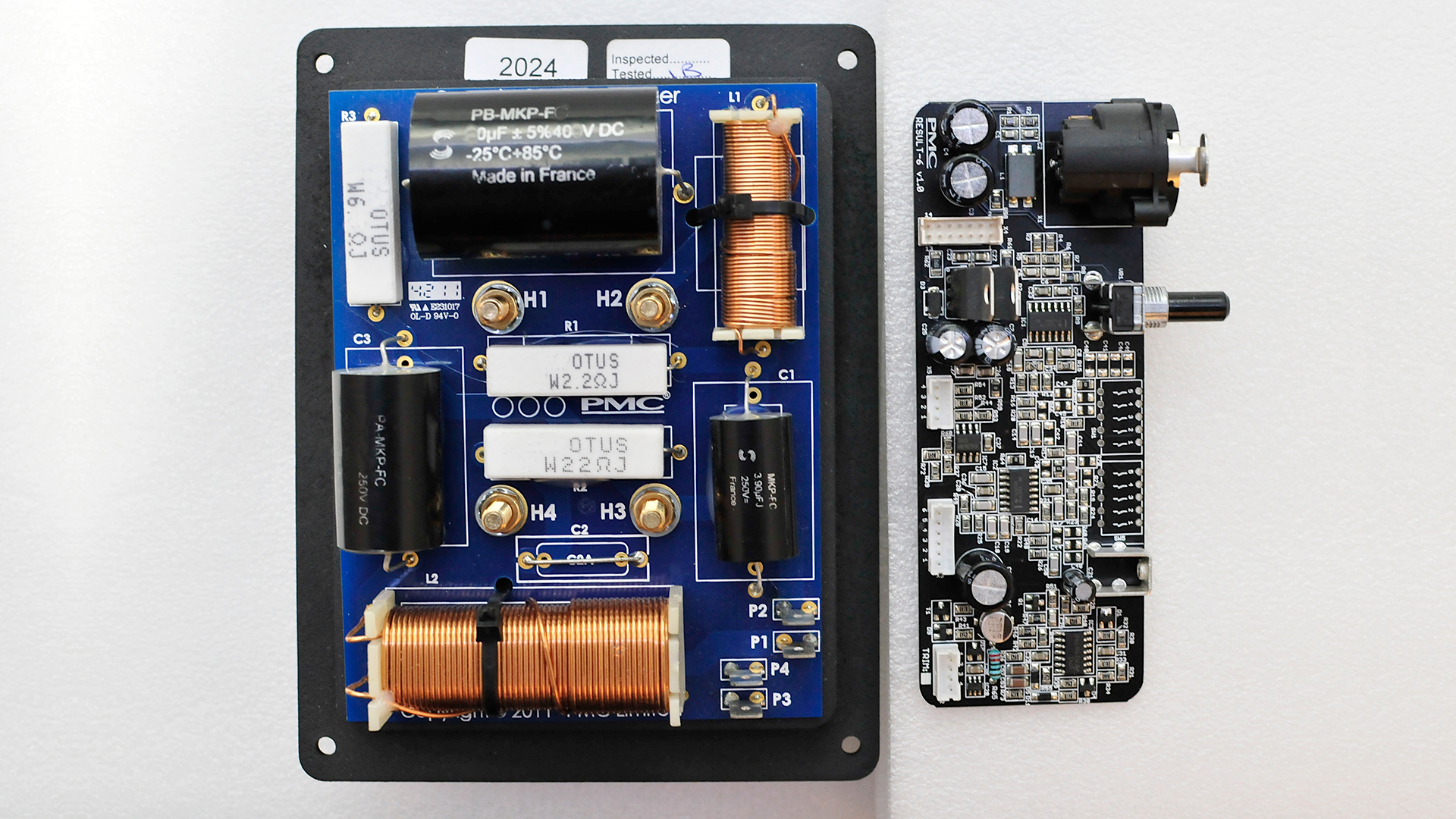
On paper, active speakers have a whole host of advantages. Their crossover design gives the designer much greater control over the signal and is far less prone to losses and distortion when compared with a passive filter alternative.
As the power amplification is integrated into the design, it can be optimised for a specific drive unit. Because it’s normally built into the box, there is no need for long lengths of speaker cable between the two, avoiding any distortion or loss caused by the wires. Simply put, there is more grip and better control.
These benefits would seem to give active speakers a generous edge; but there are also downsides. There aren’t many speaker manufacturers that can also make amplification, so the usual path is to buy in modules from an OEM supplier. There’s nothing wrong with this in principle, but things often fall short when it comes to implementation. The result is that the sound performance of the final active speaker is rarely as good as it could be.
Active speakers suffer in terms of perceived value on the shop floor too. Their electronics tend to be hidden, yet there will be an obvious price premium over similar-looking passive alternatives. Break down the respective costs and it usually turns out that the active option is the better-value route, as it consists of multiple power amplifiers – a simple two-way speaker still needs four mono power amps – whereas a passive set makes do with a single stereo amp to work its four drive units.
Active designs also limit the amount of upgrading possible. You can’t just change the power amps, for example; the whole lot has to go. That leaves less scope for enthusiasts to mix and match. You either accept the power amplifier/speaker combination as a whole or you don’t.
And what about 'powered' speakers?
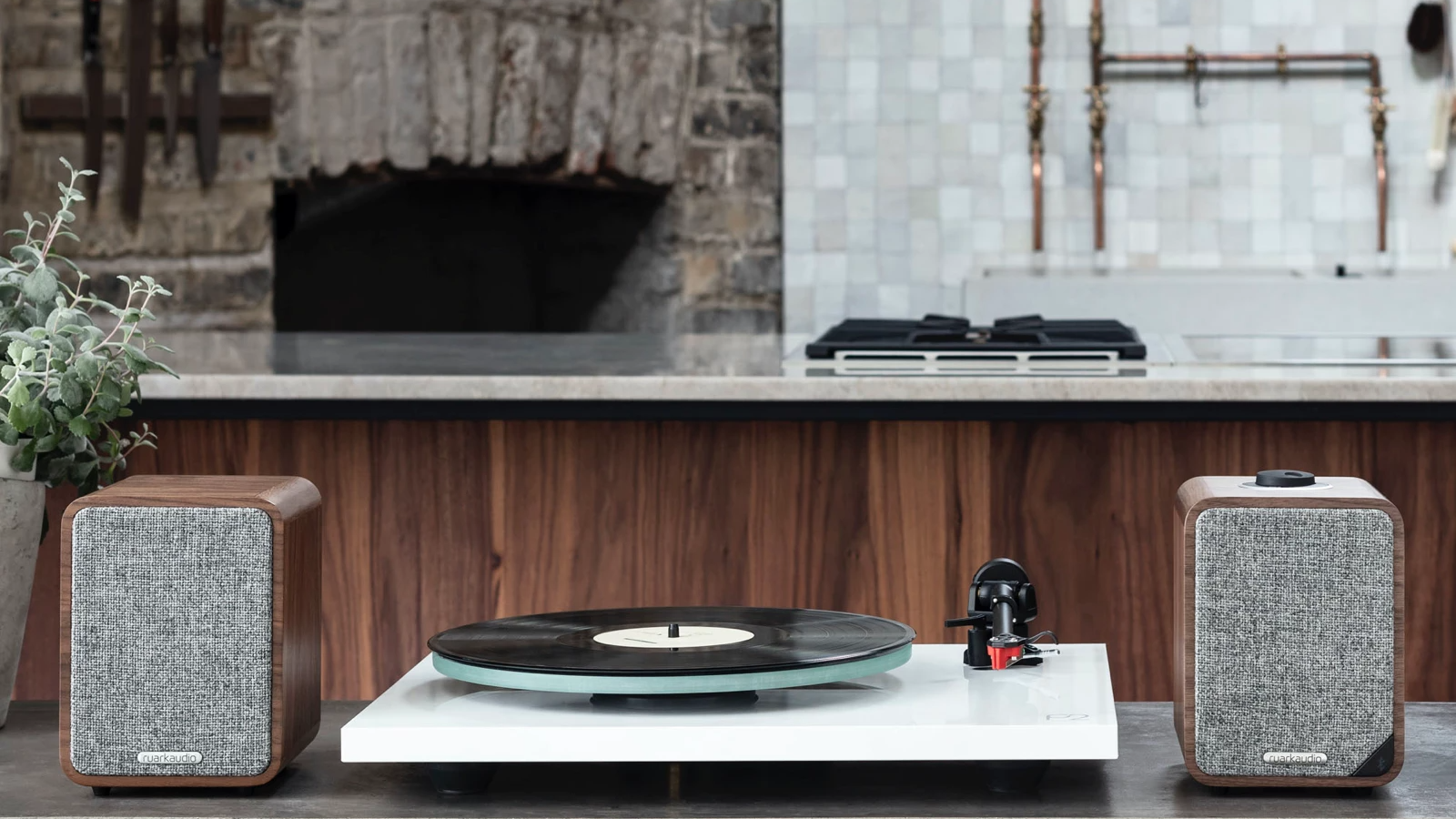
Whereas all active speakers are considered powered, not all powered speakers should be called active.
The difference is that a powered speaker has the same signal path as a passive set-up, but the amplification (often both pre and power amp) is hidden in one of the speaker enclosures. There will also be a speaker cable link between the master speaker (that has the amplification) and the slave (passive) partner.
Most affordable powered models tend to use such a configuration. Such an approach has some of the neatness of truly active operation but few of the technical benefits.
The neat, affordable Elac Debut ConneX DCB41 is a good example, in that it's a powered set-up where one speaker contains all the electronics, including the 2 x 50 watts of amplification and all the connections, while the other is a conventional passive design. It's a similar case with the Ruark Audio MR1 Mk2 and the Q Acoustics M20 powered speakers.
How about active speakers with streaming?
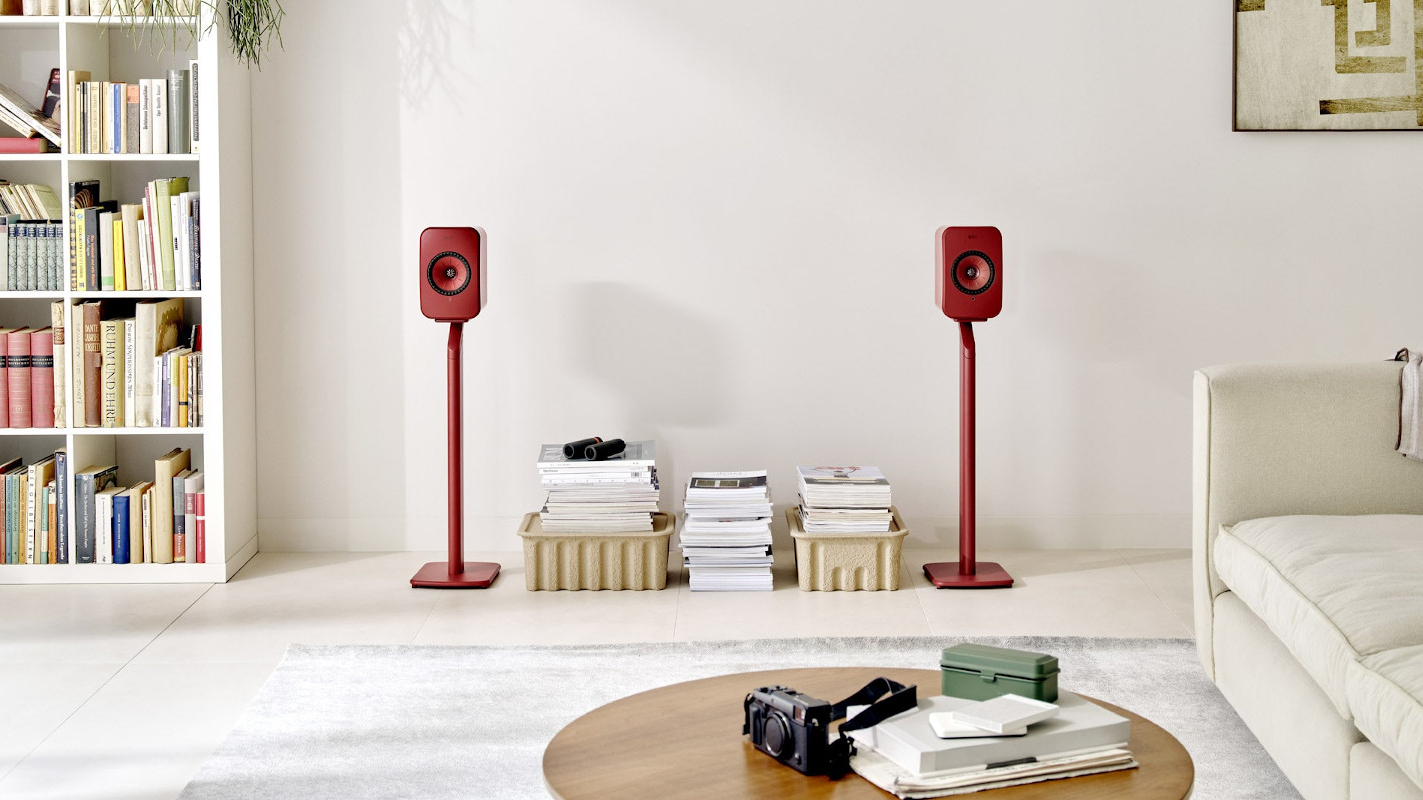
While active speakers have clear performance benefits, their conciseness also means they are attractive to users looking for a more discreet and compact way to listen to music.
Increasingly we are seeing active speakers that aim to pack in even more functionality into their cabinets – not just amplification but also streaming modules and physical connections – creating a complete 'all-in-one' system that minimises the need for extra boxes or cabling. With features such as preamplifier capabilities, digital and analogue inputs, Bluetooth and wi-fi streaming compatibility combined directly into active speakers (or a small accompanying box that then communicates with them), they offer a neat, compact and minimal-fuss alternative to a system of separates. The cost can work out more favourably than buying everything separately, too (although you shouldn't necessarily expect the same performance from them as you would a similarly priced collection of class-leading separates).
Some active speakers with streaming such as the KEF LSX II, KEF LS50 II, Triangle AIO Twin and B&W Formation Duo are fine examples of such all-in-one stereo speaker systems, whereas others such as the Dali Rubicon 2 C or the Beolab 28 come with replaceable connectivity modules (or 'hubs') that handle the source side of things, meaning they can be easily upgraded.
After all, unlike speaker technology, streaming technology is anything but timeless.
MORE:
I wish it wasn’t true, but the small things matter when you're building a hi-fi system
These are the best (passive) stereo speakers across all budgets
Alternatively, check out the best active speakers, from budget to premium

Ketan Bharadia is the Technical Editor of What Hi-Fi? He has been reviewing hi-fi, TV and home cinema equipment for almost three decades and has covered thousands of products over that time. Ketan works across the What Hi-Fi? brand including the website and magazine. His background is based in electronic and mechanical engineering.
- Kashfia KabirHi-Fi and Audio Editor
- Harry McKerrellSenior staff writer
